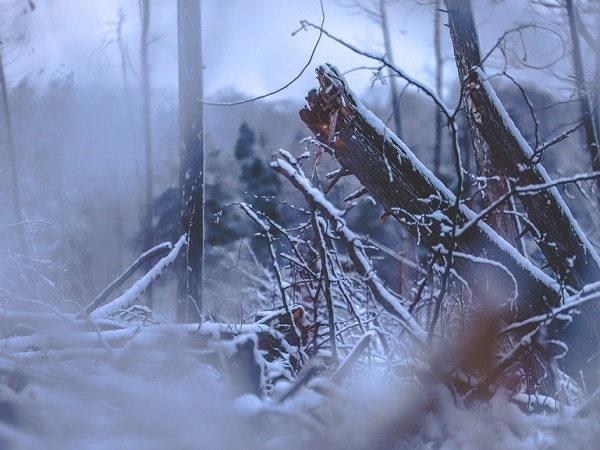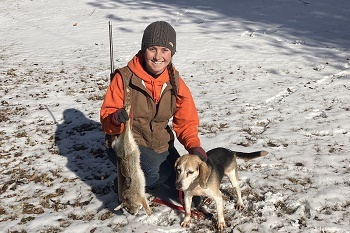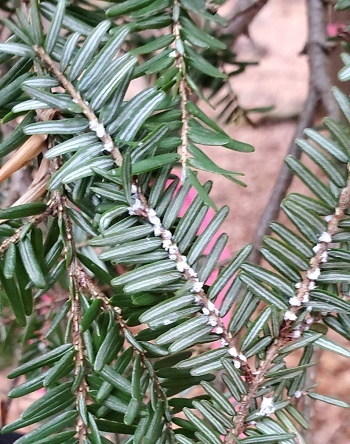|
This week's stories may reflect how the Department of Natural Resources has adapted to meet customer needs and protect public health and safety. Follow our COVID-19 response page for updates on access to facilities and programs.
We'll continue to share news and information about the best ways to discover and enjoy Michigan's natural and heritage resources! Here's a look at some of this week's stories:
See other news releases, Showcasing the DNR stories, photos and other resources at Michigan.gov/DNRPressRoom.
PHOTO FOLDER: Larger, higher-res versions of some of the images used below, and others, are available in this folder.
 Want to see more pictures like this, taken by Michigan state parks photo ambassador Jacob Chamberlin just outside Indian Lake State Park in Schoolcraft County? Visit Instagram.com/MiStateParks to explore photos and learn more about the photo ambassadors! For more on the photo ambassador program, call Stephanie Yancer at 989-274-6182.

Hunters, did you know that your base license lets you pursue cottontail rabbit, snowshoe hare, fox and gray squirrel statewide through March 31? These seasons offer plenty of time and opportunity to make the most of winter.
Need more details? Check the 2021 Hunting Digest, available at Michigan.gov/DNRDigests, for season dates, bag limits and other regulations.
Looking for places to hunt? Find public hunting lands at Michigan.gov/MiHunt. The interactive MiHunt map shows lands open to public hunting, as well as topography, cover types, trails and other recreation amenities, and more.
Still need to get your 2021 base license? Buy online at Michigan.gov/DNRLicenses or anywhere DNR licenses are sold through Feb. 28.
Questions? Get more information at Michigan.gov/SmallGame or contact the DNR Wildlife Division at 517-284-9453.
|

Several types of owls visit Michigan each winter, making January and February the best time to plan an owling trip to the eastern Upper Peninsula or search out snowy owls in wide-open spaces across the state.
If you ’re lucky enough to see one of these special visitors, please keep a respectful distance and follow these best practices to keep them (and yourself) safe.
Great gray owls are elusive and difficult to find, though they’re the tallest owls of North America. They breed in northern evergreen forests, where they hunt small mammals in meadows and bogs. These occasional visitors to the eastern U.P. can be found in trees at meadow edges. Check all levels of a tree to better see them; just remember these owls are sensitive to disturbances, so never use audio recordings to lure them.
Northern hawk owls breed in the boreal (northern regions) forests of Canada, where they mostly eat voles, mouse-like rodents. This owl is a rare visitor to Michigan, staying mainly in the eastern U.P., where they supplement their diet with grouse. Northern hawk owls prefer a midday perch in solitary trees in wooded farmlands, lakeshores or pastures.
|

Snowy owls breed in the arctic, where they primarily eat lemmings, a small arctic rodent. When in Michigan, their diet can include rats, muskrats, waterfowl and fish. You’ll spot snowy owls statewide in fields, shorelines and other open areas. This owl’s penchant for perching in conspicuous places means you might catch a glimpse along high points like hilltops, fence posts and rooftops. (This image courtesy of Christian Tompkins, Audubon Photography Awards.)
Boreal owls likely are our rarest visitor from the north. They breed in the boreal forests and high-elevation mountains of Canada, where they feed on small mammals, birds and insects. During winter, they enjoy the spruce-fir forests of the eastern U.P, where they occasionally can be found roosting 15-20 feet above the ground in aspen, birch or conifer trees.
Learn more about owls and other birds by following MI Birds, visiting the DNR’s birding page and signing up for the Audubon Great Lakes monthly newsletter.
|

Have you completed your application toward joining the ranks of one the nation’s most unique, well-trained law enforcement teams?
There’s just a little over a month to go until the Feb. 28 application deadline for Michigan’s two conservation officer academies this year.
An in-service training program is being offered to anyone who either:
- Holds a current Michigan Commission on Law Enforcement Standards license (this includes current local, county or state law enforcement officers), or
- Is eligible to immediately be licensed upon employment and also meets the DNR’s hiring requirements.
All other applicants will be eligible for enrollment in an MCOLES basic training academy to meet the training standards. After successfully completing the MCOLES academy, recruits will receive specialized training on natural resource laws and regulations, as well as marine, off-road vehicle and snowmobile operation.
|

Candidates must be at least 21 years of age upon activation of an MCOLES license. Neither a college education nor any previous law enforcement, fishing or hunting experience is needed.
During the academy, recruits will become State of Michigan employees and receive biweekly paychecks while earning benefits and retirement.
“Our instructors are the best at what they do,” said F/Lt. Jason Wicklund, DNR Law Enforcement Division. “We want to see applicants succeed and will provide recruits everything they need to have a successful academy experience and a strong start in a challenging, rewarding career.”
Those interested in learning more about conservation officer academy opportunities are encouraged to contact a recruiter.
Questions? Contact F/Lt. Jason Wicklund at 906-284-1933.
|

One thing is clear: People love happy little trees!
Now with a couple years under its belt and continued, strong support from participants, the DNR's Bob Ross-inspired Happy Little Virtual 5K/Run for the Trees has accelerated tree-planting and forest protection efforts in dozens of state parks and recreation areas.
Are you ready to run, walk or roll? This year’s virtual event takes place between Earth Day and Arbor Day, April 22-29. Sign up by March 1 and join thousands of participants from all over the world, feel good about helping special outdoor places and get your hands on some fab Bob Ross swag.
Registration is $34 and includes your T-shirt, finisher’s medal, commemorative bib number and shipping. For more information, including group discounts and team registration, contact Michelle O’Kelly, DNR Parks and Recreation Division, at OKellyM1@Michigan.gov.
|

There is a tiny insect that has the potential to cause big problems for hemlock trees throughout Michigan; in fact, the hemlock woolly adelgid is an invasive pest that already has been confirmed in several counties on the west side of the state: Allegan, Ottawa, Muskegon, Ocean and Mason.
Listen to the DNR's Drew Rayner on a recent WGVU Radio "Morning Show" discussing this forest pest and what people can do to help identify it.
Rayner, the West Michigan hemlock woolly adelgid coordinator for the DNR, explains that winter is the best time to look for evidence of these little invaders, and that's why state forestry experts are asking residents with hemlock trees on their property to do exactly that.
What should you look for? Small, round, white, cottony masses about 1/16 inch to 1/4 inch in size, found on twigs at the base of the needles on the underside of hemlock tree branches. (Remember, hemlocks only; hemlock woolly adelgids don't infest pine or spruce trees.)
Hemlock woolly adelgids suck nutrients from hemlock trees. Left untreated, an infestation can kill hemlock trees in four to 10 years, but trees can be protected with proper insecticide treatments.
Questions? Contact Drew Rayner at 517-231-8763 or visit Michigan.gov/HWA.
|
|